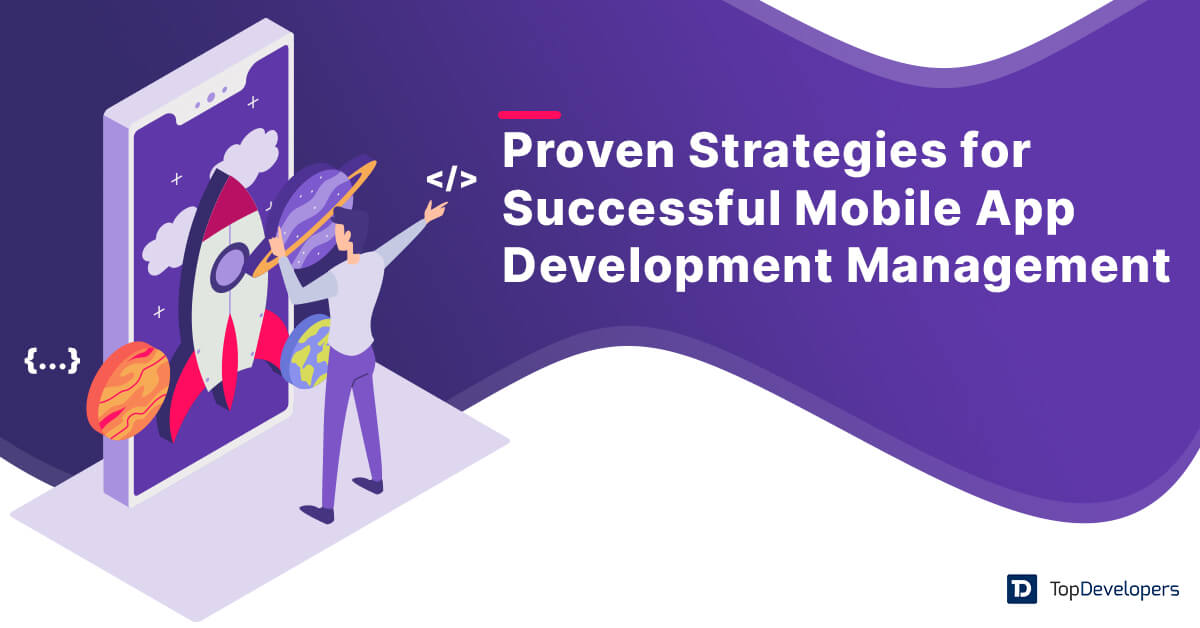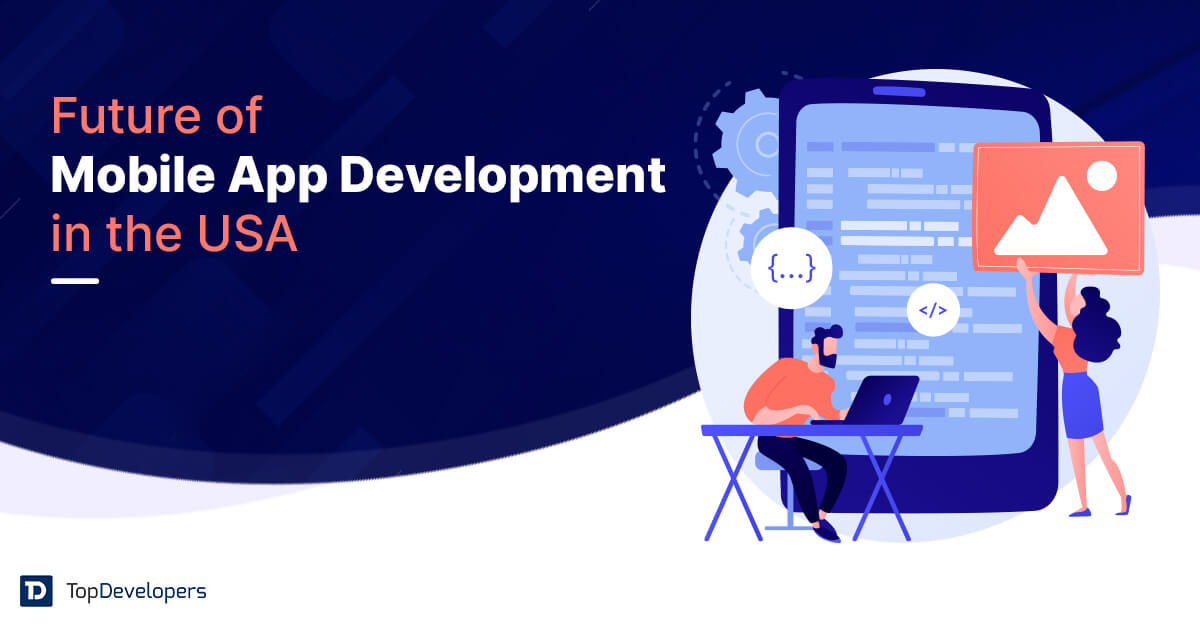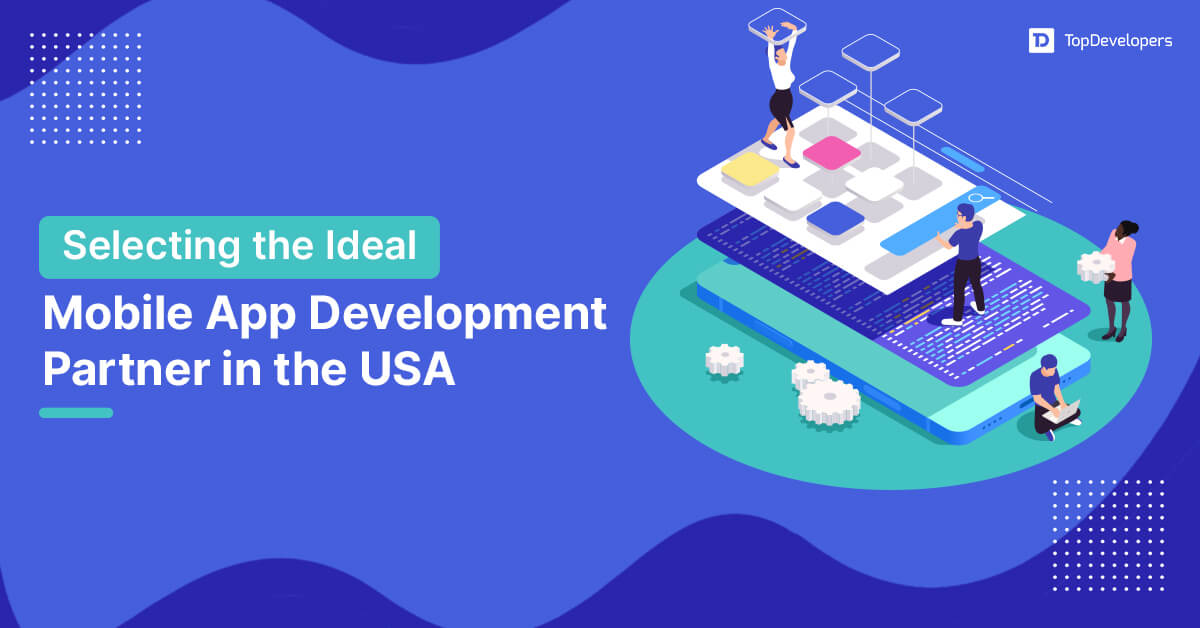
A technology stack allows businesses to develop, test, and launch mobile applications glitch-free. Unfortunately, the wrong choice can make the app slow, unresponsive, and insecure. So, tech stack selection is crucial to defining the performance, success, and future of mobile applications. However, choosing the right tech stack is difficult for non-tech geeks.
In fact, the array of options for programming languages, technologies, tools, and integrations has strengths and weaknesses that confuse even technical experts as to which one to choose. So, how would businesses select a technology stack for stable, scalable, and secure app development without going over budget?
The guide will help you decide on the right tech stack ahead of the mobile app development with a brief overview of the tech stack, types of tech stack, and the importance of tech stack selection.
Table of Contents
- What is a tech stack in mobile application development?
- What are the types of tech stack for mobile app development?
- Why is tech stack selection important in Mobile app development?
- How do you select the best tech stack for app development?
- Compatibility with existing technology
- Analyze your target audience
- Market Coverage
- Budget
- UI/UX design
- Performance
- Functionality
- Mobile application type
- Identify the app’s goals
- Development team capabilities
- Keep room for scalability and portability
- Ensure robust security
- Consider complexity
- Don’t ignore deadlines
- Technology sponsor
- Select the right tech stack for your mobile app!
- FAQs About Mobile App Technology Stack
What is a tech stack in mobile application development?
The technology stack is a strategic combination of programming languages, frameworks, tools, platforms, and UI/UX technologies required for the development of mobile app. The tech stack consists of 4 components that are:
Development platform
The app development platform serves as a base to get the app developed, tested, and launched quickly for different platforms. The platform provides front-end development tools, API management tools, and Mobile backend as a service (MBaaS) alongside native apps, web apps, and hybrid app development capabilities.
Front-end development
Various tools and technologies, such as HTML, CSS, JavaScript, and Web Assembly, are leveraged to build the interface with which users interact. Ensuring seamless navigation, high accessibility, and best performance with no resolution issues is all-important.
Backend development
The backend is responsible for creating business logic, security, and data sorting that users can’t see. It is built using programming languages, frameworks, databases, servers, collaboration services, microservice platforms, and local development environments.
Hosting
To meet businesses’ additional needs for outstanding performance and robust security, mobile apps are hosted on private or cloud servers that run the backend components and enable seamless app functioning.
What are the types of tech stack for mobile app development?
The mobile app development tech stack depends on the type of app you want to develop and the specific development approach. Tech stack types also depend on the platform for which the app is developed for.
Native mobile app development tech stack
When you are building native applications, the native mobile app development tech stack is considered based on the platform selected. The native tech stack includes platform-specific coding languages, frameworks, and relevant tools because native development requires creating a separate codebase for each platform. The performance-critical, platform-specific user experience and UI/UX design must define the platform selection and, thus, the technology stack.
Under the native app development umbrella, building mobile apps for Android and iOS platforms natively involves two different tech stacks with different combinations of technologies.
Android tech stack
When building native Android apps, Java and Kotlin are preferred programming languages by top Android app developers. Java, the open-source language, provides a range of libraries that make development a breeze. Kotlin gains the upper hand over the Java language in terms of stability, lightweight, less verbosity, and API design. 95% of the top 1000 Android apps use Kotlin code, and 60% of Android app developers are already using Kotlin for Android development.
Android Studio facilitates code editing, performance tooling, and debugging, builds a system, and deploys a system that accelerates app development. The Android developer tool opens the doors for graphical UI builders, on-device debugging tools, and emulators and provides support for Android-specific coding and scriptable test automation. The Android SDK provides access to the latest features, and third-party add-ons can also be downloaded to enhance functionality.
Programming language: Java or Kotlin
Development framework: Android Studio, Android SDK
iOS tech stack
iOS app developers choose Swift or Objective-C programming languages to avail of the dynamic runtime environment and object-oriented capabilities. App developers give more credence to Swift because its inline support for data and text string manipulation makes it flawless, reduces the app size, and, thus, improves performance.
Apple XCode is used as a toolkit when the Swift language is selected for iOS app development. It supports a graphical editor, Git repositories, and debugging tools. iOS SDK provides APIs (including libraries and tools) that link platforms and applications.
Programming language: Swift or Objective-C
Development framework: Apple XCode, iOS SDK
Cross-platform app development tech stack
This approach involves building a single codebase in JavaScript and then connecting native components to publish the app on multiple platforms. Different frameworks or a combination of frameworks are leveraged for cross-platform app development.
React Native, a cross-platform framework is known for building popular apps for both iOS and Android platforms using the fundamental UI building blocks. It ensures building a native-like UI by writing app logic in React Native and running in JavaScript. The Xamarin framework enables 90% of code sharing across all platforms as it uses statically typed C# that facilitates cross-compilation to native iOS and Android binaries.
Programming language: JavaScript, Java, and C#
Development framework: React Native, Xamarin, PhoneGap, and Cordova
Hybrid app development tech stack
Hybrid app development requires a tech stack where the codebase is written using JS, HTML, and CSS technologies. Later, the code is wrapped inside a native container, which is WebView. This tech stack fits well for apps that don’t require extensive integrations, access to hardware functionalities, or complexity, like weather apps or to-do list apps.
Programming language: JS, HTML, and CSS
Development framework: Visual Studio, Ionic
Progressive web app development tech stack
The progressive web app development tech stack resembles the hybrid app development tech stack because PWAs are built using web technologies and render native-like experiences on different mobile devices. They are built using one codebase and run from a web browser while adapting the mobile device capabilities they run on.
Programming language: HTML, CSS, JavaScript, and WebAssembly
Development framework: Angular, React, Vue, and Polymer
Why is tech stack selection important in Mobile app development?
The right tech stack is the backbone of the app development that defines the app’s usability, performance, and epic success. Let’s understand the importance of tech stack selection with attention to detail.
Enhance development efficiency
The right tech stack selection allows developers to focus on solving and building core logic and functionalities. The latest frameworks and libraries provide readymade functionalities that can be easily integrated without needing to build them from scratch.
Ensure scalability and flexibility
When the app requires a scalable backend that can handle increasing load without negatively impacting performance, the modernized tech stack with cloud services and facilitating scalable component integration ensure the app can accommodate growing traffic and data volume without crashes or slow loading.
Improves compatibility
Operating systems are upgraded once or twice a year, so it is vital that the app works on the latest OS and is compatible with existing OS versions. This requires choosing the tech stack that facilitates scaling the app to the new OS versions to keep modern users glued to the app.
Simplify future maintenance
As businesses grow, upgrading the application with more functionalities and redesigning it- is essential. The tech stack must enable future upgrades with little to no downtime so that businesses can respond to dynamic requirements.
Avail of community support
Regardless of the developers’ expertise and experience, solving technical complexity without community support is difficult. Choose the tech stack with a massive community of developers who share knowledge, experience, and solutions to development-related challenges.
Guarantee security and stability
Security is a cardinal aspect of mobile app development process. The right tech stack includes well-established technologies, frameworks, and tools with built-in security measures that are impossible to make vulnerable. Including tried-and-tested technologies also reduces the chances of unexpected failures.
How do you select the best tech stack for app development?
With a variety of tech stacks available for native and cross-platform app development, it might be difficult for you to choose one. The best tech stack for mobile app development is to be decided by keeping the app’s functionality, scalability, maintainability, and other factors in mind. Let’s discuss the top factors that should be considered.
Compatibility with existing technology
Ensure the selected mobile app development tech stack is aligned or compatible with the technologies or tools you plan to use in the project. When the tech stack works well with the current app structure, it definitely paves the way for a great future.
Analyze your target audience
Target userbase research and analysis are significant in understanding the preferences for mobile devices and operating systems, internet availability, and ways of using the app. They further help decide tech stacks such as platform selection (Android or iOS), technology usage for offline functionalities enablement, etc.
Market Coverage
After checking the target audience, identifying the location where they live is vital. It helps decide the platforms the users mostly use and their specifications for quality. For example, in the US market, 62% of users prefer using iOS applications, while 37% prefer Android apps. US app users give high credence to quality. So, building a native application is favorable for the US market, and considering the iOS platform widens the market reach.
Budget
Tech stack selection must be based on the budget that businesses set aside because building advanced apps with emerging technologies may attract users but require tech specialists, which increases development costs. Also, building apps natively uplifts the cost by a large margin. So, to avoid cost overruns, prefer developing apps with a cross-platform or hybrid app development approach.
UI/UX design
The mobile app acquisition and retention rates depend on the experience that users receive after using the app. UI/UX design is vital in returning users to the mobile app. Native apps are good at rendering the best UI/UX design without resolution issues, while cross-platform apps have limited UI/UX capabilities. Android app developers use Android UI and JetPack Compose for elegant UI creation, and UIKit and SwiftUI are UI frameworks that iOS app developers leverage for iOS app design. Based on UI/UX design finesse needs, choose the tech stack accordingly.
Performance
Performance is crucial for mobile applications to stay ahead of the competition. Irrespective of traffic spikes, users expect high performance, which requires a backend with heavy data processing capacity. The tech stack must include backend technologies such as Node.JS, Angular.JS, or Express.JS, which guarantee high performance in every case.
Functionality
The mobile app includes different functionalities depending on its purpose. For example, functionality requires accessing hardware capabilities such as a camera or GPS, and then it must be built natively. This changes the tech stack automatically. Advanced functionality, such as AI chatbot integration, requires artificial intelligence technology and other tools in the technology stack. Select the tech stack based on the list of features and functionalities you want in the application.
Mobile application type
Every mobile app is unique in itself in every way. Be it the audience it’s targeting, the device on which it performs flawlessly, the network conditions required, the experience it delivers, platforms it runs on, and support for operating systems. All of these factors are completely different from one mobile app to another, which ultimately brings the differences in the programming language, framework, libraries, and tools selection under the tech stack umbrella.
Identify the app’s goals
What you want to accomplish with your app brings a large difference in the tech stack selection. When you want to develop a high latency app that responds at speed, then the tech stack selected is completely different from the app having low latency needs. Heavy load processing requires advanced technology leverage that enables seamless interactions without any performance lag.
Development team capabilities
Many times, the company ends up selecting the tech stack with advanced technologies and tools. However, if the team is not well-versed or experienced with those tools, it ultimately extends the development time and efforts, thus the app development cost. It’s better to choose the tech stack where the team has tried their hands and is comfortable while working with those technologies. Otherwise, achieving outstanding results while maintaining quality is implausible. Hire dedicated app developers for your next project to strike a balance between the right tech stack selection and timely app development.
Keep room for scalability and portability
There’s always a difference between native apps and cross-platform apps when you observe them. Native app development is a good approach but you should choose the technology stack for mobile app development that enables the app to port on other platforms because as the business grows, publishing the app on multiple platforms helps.
Also, the tech stack should provide room for scaling the app’s functionalities and design to keep it up to date with evolving users’ preferences and market conditions. Choose the tech stack that goes well with existing technologies and works compatibly with upcoming technologies.
Ensure robust security
We all know that financial damage can be dealt with, but reputation damage is irreparable. If there’s any technology or tool chosen with loose ends, then it breaks the app’s security and ruins the brand image. Include the tech stack that makes the app’s data safe and secure. Plus, if the best team is involved, they add all the security measures to the app that make it impossible for fraudsters to put a dent in the security threat.
Consider complexity
The app’s complexity is often misunderstood by adding numerous UI elements to the mobile application. Instead, it’s about making the app interact with features and communicate with the backend. Native app stacks are good at accessing device-specific features, data displays, and data caching services.
Don’t ignore deadlines
Some projects are time-critical and bring success to the table only when they are launched at the right time in the market. In such cases, prefer going ahead with the MVP approach that accelerates app development or opts for a tech stack that makes the development feasible in the limited time and budget with the allocation of more resources. Like the timelines, there is a whole set of aspects that go into the budget factor as well.
Technology sponsor
The technology that’s launched or backed by the parent company impacts the technology performance, documentation, and community support. For instance, Google, Adobe, and Microsoft have huge communities that are helpful for developers to get necessary assistance when required.
Select the right tech stack for your mobile app!
Going ahead with the latest app development trends and market conditions is good to go. However, planning for future releases is as important during app development. That’s where mobile app development tech stack selection plays a vital role. The technology stack must be chosen prudently with thorough research as the long-lasting success of the app entirely depends on it. In case, you are unsure about tech stack selection and have no prior experience then it is suggested that you find and hire a reliable mobile app development company to get the required assistance.
FAQs About Mobile App Technology Stack
What Is Technology Stack?
A tech stack is a collection of languages, frameworks, libraries, tools, and APIs that are stacked one over the other to build a comprehensive solution.
Which Platform Is Considered The Base For Mobile App Development?
Select the platform that serves your app needs most aptly. Declaring one such platform as the best is implausible because every platform is popular among different app developers for different types, different locations, preferences, demographics, and other aspects.
How Should You Select The Best Technology Stack For Mobile Apps?
The app’s type, goal, timeline, budget, developers’ expertise, security, scalability, complexity, and portability need help in deciding the right tech stack.
 Avantika Shergil
| Jun 4, 2024
Avantika Shergil
| Jun 4, 2024
An enthusiastic Operations Manager at TopDevelopers.co, coordinating and managing the technical and functional areas. She is an adventure lover, passionate traveler, an admirer of nature, who believes that a cup of coffee is the prime source to feel rejuvenated. Researching and writing about technology keeps her boosted and enhances her professional journeying.





